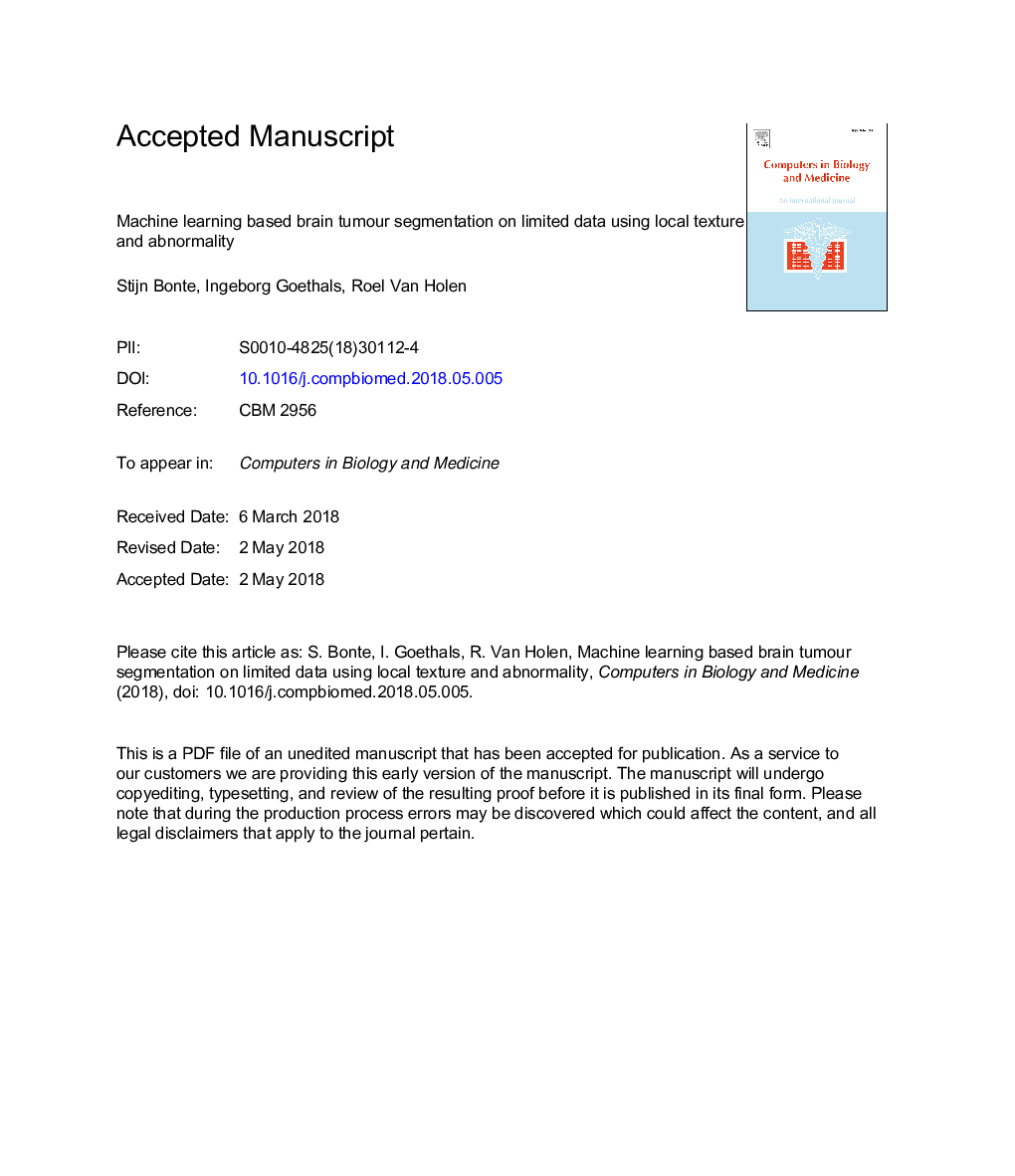| Article ID | Journal | Published Year | Pages | File Type |
|---|---|---|---|---|
| 6920488 | Computers in Biology and Medicine | 2018 | 28 Pages |
Abstract
Brain tumour segmentation in medical images is a very challenging task due to the large variety in tumour shape, position, appearance, scanning modalities and scanning parameters. Most existing segmentation algorithms use information from four different MRI-sequences, but since this is often not available, there is need for a method able to delineate the different tumour tissues based on a minimal amount of data. We present a novel approach using a Random Forests model combining voxelwise texture and abnormality features on a contrast-enhanced T1 and FLAIR MRI. We transform the two scans into 275 feature maps. A random forest model next calculates the probability to belong to 4 tumour classes or 5 normal classes. Afterwards, a dedicated voxel clustering algorithm provides the final tumour segmentation. We trained our method on the BraTS 2013 database and validated it on the larger BraTS 2017 dataset. We achieve median Dice scores of 40.9% (low-grade glioma) and 75.0% (high-grade glioma) to delineate the active tumour, and 68.4%/80.1% for the total abnormal region including edema. Our fully automated brain tumour segmentation algorithm is able to delineate contrast enhancing tissue and oedema with high accuracy based only on post-contrast T1-weighted and FLAIR MRI, whereas for non-enhancing tumour tissue and necrosis only moderate results are obtained. This makes the method especially suitable for high-grade glioma.
Related Topics
Physical Sciences and Engineering
Computer Science
Computer Science Applications
Authors
Stijn Bonte, Ingeborg Goethals, Roel Van Holen,
